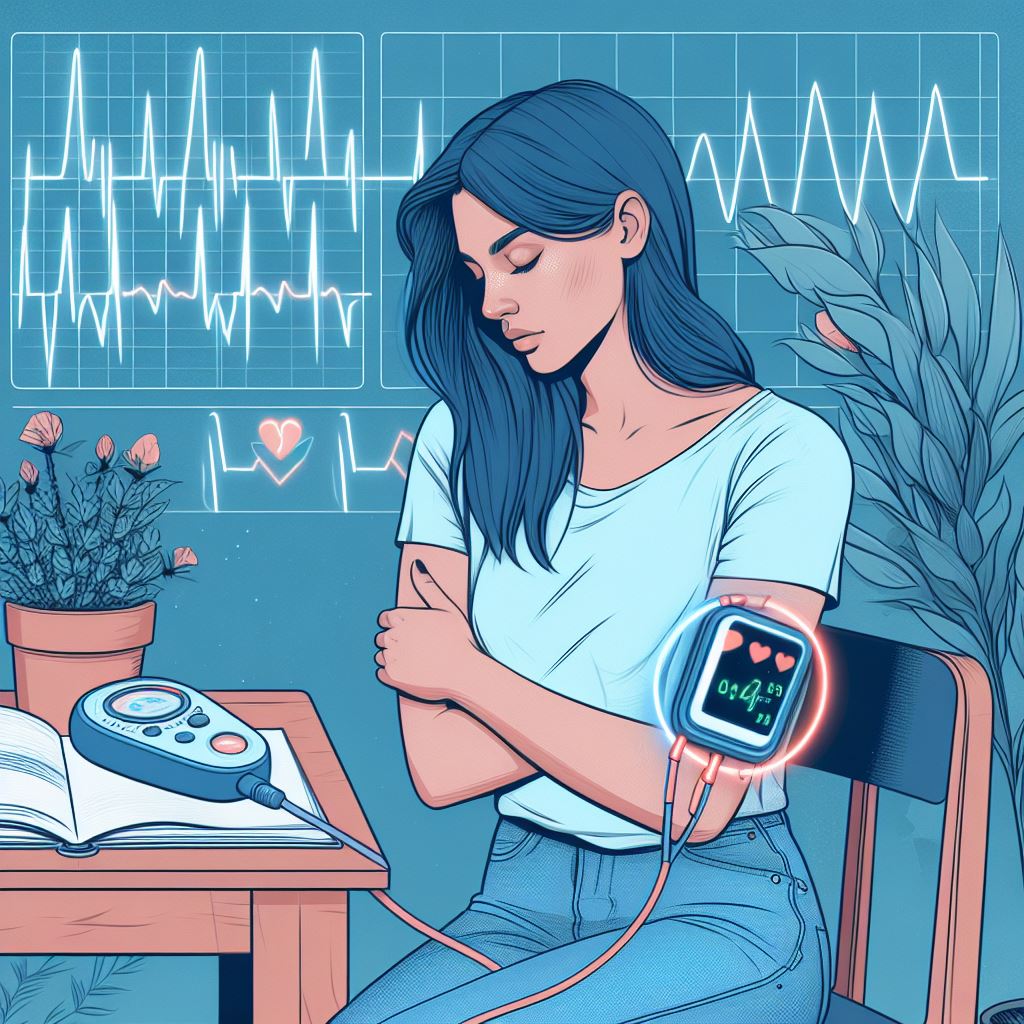Body-centered methods are taking center stage for treating anxiety, offering individuals new avenues to enhance their well-being on a personal level. One particular approach gaining prominence is biofeedback—a therapeutic technique designed to provide real-time feedback on physiological responses, such as heart rate, muscle tension, and skin temperature.
Imagine biofeedback as a tool that uses electronic devices to measure how the body’s heart rate, muscle tension, and skin temperature changes in real time. Participants receive immediate feedback on these responses, enabling them to gain awareness and control over normally involuntary bodily functions. Through this process, biofeedback helps individuals learn to soothe and influence their physiological functions through paired breath exercises or for improved well-being and mental health.
This dynamic process empowers people to cultivate self-awareness and self-regulation, fostering a profound connection between mind and body. When applied to health and wellness, biofeedback becomes a powerful tool for managing stress, and anxiety, improving sleep, as well as enhancing focus and concentration (Park and Roth, 2023).
For those dealing with anxiety, biofeedback offers real-time awareness of the body’s anxious responses, allowing the practice of relaxation techniques and breathing exercises to promote a calmer mental state. Moreover, it plays a role in mood regulation by monitoring physiological markers, contributing to overall mood regulation and emotional well-being. In the realm of pain management, especially for those with chronic pain, biofeedback utilizes techniques like electromyography (EMG) to monitor and mitigate muscle tension (Lazaridou et al., 2023).
Our clinical therapists at IAM are eager to guide you through biofeedback techniques, empowering you through sessions tailored to your specific goals, such as stress reduction or mood enhancement. The integration of biofeedback with other mental health practices, like mindfulness, forms a holistic, person-centered therapeutic approach. Consistency in practice is crucial, enhancing the effectiveness of the approach over time.
In the dynamic realm of mental health care, IAM values biofeedback as a valuable ally in equipping individuals with tools for self-discovery, empowerment, and sustained mental and emotional resilience.
Consider biofeedback devices to try at home to get started:
1. Lazaridou A, Paschali M, Vilsmark ES, Sadora J, Burton D, Bashara A, Edwards RR. Biofeedback EMG alternative therapy for chronic low back pain (the BEAT-pain study). Digit Health. 2023 Feb 7;9:20552076231154386. doi: 10.1177/20552076231154386. PMID: 36776410; PMCID: PMC9909059. https://pubmed.ncbi.nlm.nih.gov/36776410/2. Park SJ, Roth M. Heart Rate Variability Biofeedback as Adjunctive Treatment of Generalized Anxiety Disorder: A Case Report. Integr Med (Encinitas). 2023 Sep;22(4):42-47. PMID: 37752932; PMCID: PMC10519238. https://pubmed.ncbi.nlm.nih.gov/37752932/
